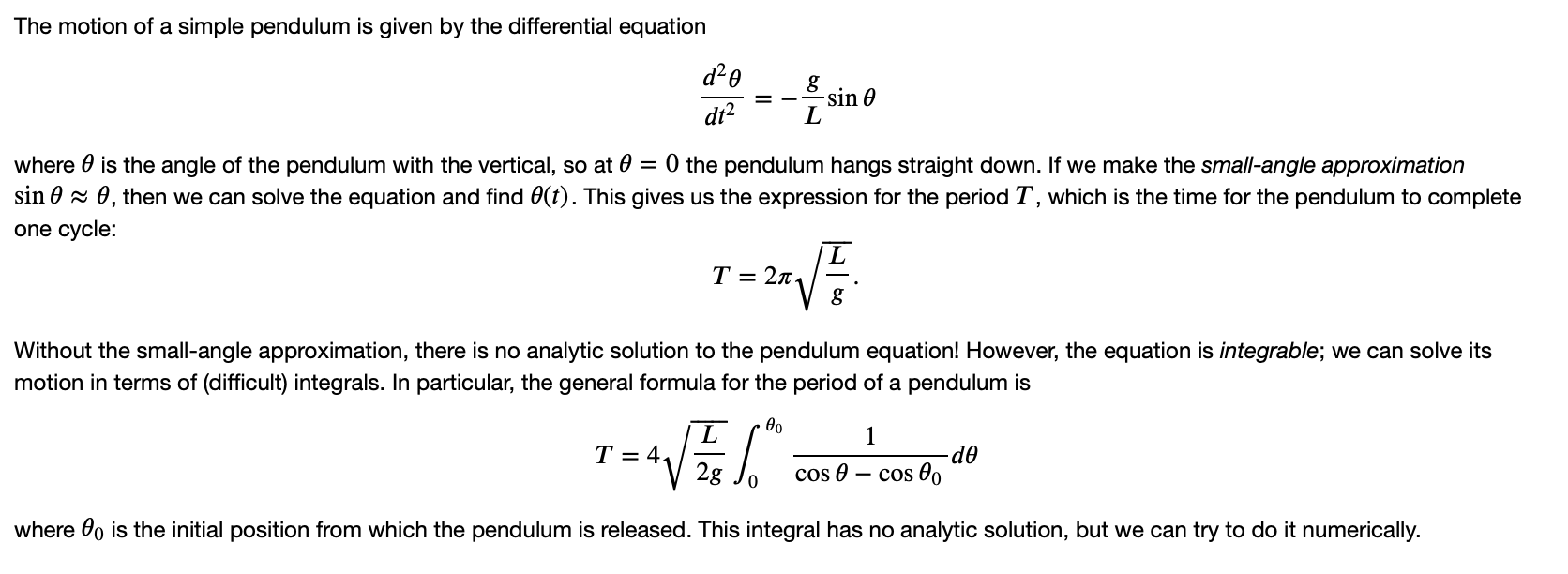Answered step by step
Verified Expert Solution
Question
1 Approved Answer
Implement the function theta_discrete(theta_0, delta, num_points) below , which should create a discretized array of values from 0 to 00. Also implement pendulum_I(theta, theta_0) ,
Implement the function theta_discrete(theta_0, delta, num_points) below, which should create a discretized array of values from 0 to 00. Also implement pendulum_I(theta, theta_0), which should take a discrete array created by theta_discrete and a value of theta_0, and return an array for the integrand (,0)I(,0).


Step by Step Solution
There are 3 Steps involved in it
Step: 1

Get Instant Access to Expert-Tailored Solutions
See step-by-step solutions with expert insights and AI powered tools for academic success
Step: 2

Step: 3

Ace Your Homework with AI
Get the answers you need in no time with our AI-driven, step-by-step assistance
Get Started


